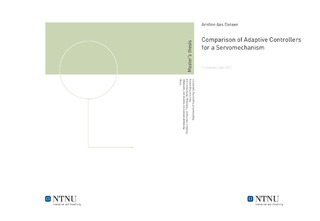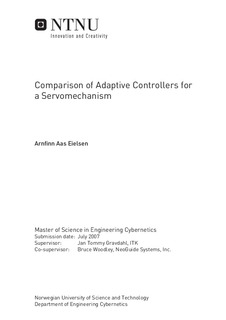| dc.description.abstract | Electric motors with metal graphite brushes experience a change in contact resistance depending on current load. This varying resistance leads to varying gain in the motor, since the proportion of power dissipated due to the resistance changes. This investigation is concerned with a servomechanism, which uses such motors for position and force control. Force control with electric motors is typically accomplished by controlling the current. The servomechanism utilizes a discrete controller, and discretization renders the system unstable for any practical sampling times and controller gains when using current feedback. Feedforward is therefore used to control the current, and is thus sensitive to the variation in the motor's resistance. To counter the sensitivity, a parameter estimator using least mean squares is presently used to learn the value of the resistance. An alternative to the parameter estimator might be a gain-scheduler based on a model of the resistance attenuation phenomenon. It should be possible to find such a model because of the deterministic quality of the resistance attenuation. In the course of this investigation, an extended Kalman filter has been developed to estimate current and resistance with accuracy. Estimated current and resistance data from a series of experiments has been fitted to a rational model using nonlinear regression. The obtained model was used as a gain-scheduler. The estimated resistance from the extended Kalman filter, the least mean squares estimator, and the gain-scheduler were used in conjunction with the feedforward controller and compared for their ability to control the current. The extended Kalman filter provided the most accurate results, but at the expense of being more complex than the least mean squares estimator. The gain scheduler was the worst performer, most likely due to unmodeled effects. With some modifications, it was made to perform on par with the least mean squares estimator, but more work is required before it can be recommended for use. | nb_NO |

